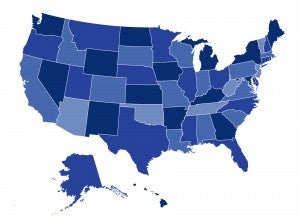
By Justin Giovannelli, Kevin Lucia, and Sabrina Corlette
Prior to the Affordable Care Act, insurance companies in most states could charge two people a different price for the same health coverage, depending on their medical history, gender, or occupation, among other reasons. The ACA reformed these premium rating practices by limiting the factors that insurers are allowed to consider when pricing coverage. Health status rating is now prohibited, and premiums in the individual and small-group markets can be adjusted only for four factors: (1) whether the plan covers an individual or family; (2) age; (3) where people live; and (4) tobacco use.
While states weighed a number of considerations when deciding how to implement these federal requirements, some of the thorniest issues for policymakers have concerned tobacco rating. Although the ACA allows insurers to charge smokers and other tobacco users up to 50 percent more for coverage, a number of states have set limits on tobacco rating that are tougher than federal law.
In a new blog post for The Commonwealth Fund, Justin Giovannelli, Kevin Lucia, and Sabrina Corlette discuss some of the arguments for and against tobacco rating, and examine what some states are doing to customize their approach to this controversial rating factor. You can read the full post here.

